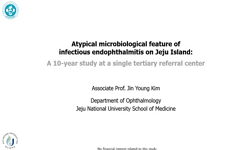<P>Abstract</P><P>Jeju Island is a Quaternary shield volcano built upon the Yellow Sea continental shelf off the Korean Peninsula. Decades of borehole drilling reveals that the shield-forming lavas of the island are underlain by exte...
http://chineseinput.net/에서 pinyin(병음)방식으로 중국어를 변환할 수 있습니다.
변환된 중국어를 복사하여 사용하시면 됩니다.
- 中文 을 입력하시려면 zhongwen을 입력하시고 space를누르시면됩니다.
- 北京 을 입력하시려면 beijing을 입력하시고 space를 누르시면 됩니다.


Primary versus secondary and subaerial versus submarine hydrovolcanic deposits in the subsurface of Jeju Island, Korea
한글로보기https://www.riss.kr/link?id=A107750397
- 저자
- 발행기관
- 학술지명
- 권호사항
-
발행연도
2008
-
작성언어
-
- 주제어
-
등재정보
SCOPUS,SCIE
-
자료형태
학술저널
-
수록면
899-924(26쪽)
- 제공처
-
0
상세조회 -
0
다운로드
부가정보
다국어 초록 (Multilingual Abstract)
<P>Abstract</P><P>Jeju Island is a Quaternary shield volcano built upon the Yellow Sea continental shelf off the Korean Peninsula. Decades of borehole drilling reveals that the shield-forming lavas of the island are underlain by extensive hydrovolcanic deposits (the Seoguipo Formation), which are about 100 m thick and show diverse depositional features. This study provides criteria for distinguishing between hydrovolcanic deposits formed by primary (pyroclastic) and secondary (resedimentation) processes in subaerial and submarine settings based on the observations of several selected cores from the formation. Five facies associations are identified, including: (i) primary hydrovolcanic deposits formed by pyroclastic surges and co-surge fallouts in tuff rings (facies association PH<SUB>TR</SUB>); (ii) primary hydrovolcanic deposits formed by Surtseyan fallout and related pyroclastic transport processes in tuff cones (facies association PH<SUB>TC</SUB>); (iii) secondary hydrovolcanic deposits formed by debris flows, hyperconcentrated flood flows, sheet floods and rill flows in subaerial settings (facies association RH<SUB>AE</SUB>); (iv) secondary hydrovolcanic deposits formed in submarine settings under the influence of waves, tides and occasional mass flows (facies association RH<SUB>MAR</SUB>); and (v) non-volcaniclastic and fine-grained deposits formed in nearshore to offshore settings (facies association NV<SUB>MAR</SUB>). The primary hydrovolcanic facies associations (PH<SUB>TR</SUB> and PH<SUB>TC</SUB>) are distinguished from one another on the basis of distinct lithofacies characteristics and vertical sequence profiles. These facies differ from the secondary hydrovolcanic and non-volcaniclastic facies associations (RH<SUB>AE</SUB>, RH<SUB>MAR</SUB> and NV<SUB>MAR</SUB>) because of their distinctive sedimentary structures, textures and compositions. The depositional processes and settings of some massive and crudely stratified volcaniclastic deposits, which occur in many facies associations, could not be discriminated unambiguously even with microscopic observations. Nevertheless, these facies associations could generally be distinguished because they occur typically in packets or sequences, several metres to tens of metres thick and bounded by distinct stratigraphic discontinuities, and comprise generally distinct sets of lithofacies. The overall characteristics of the Seoguipo Formation suggest that it is composed of numerous superposed phreatomagmatic volcanoes intercalated with marine or non-marine, volcaniclastic or non-volcaniclastic deposits. Widespread and continual hydrovolcanic activity, together with volcaniclastic sedimentation, is inferred to have persisted for more than a million years in Jeju Island under the influence of fluctuating Quaternary sea-levels, before effusion of the shield-forming lavas. Extensive distribution of hydrovolcanic deposits in the subsurface of Jeju Island highlights that there can be significant differences in the eruption style, growth history and internal structure between shelfal shield volcanoes and oceanic island volcanoes.</P>




 ScienceON
ScienceON



